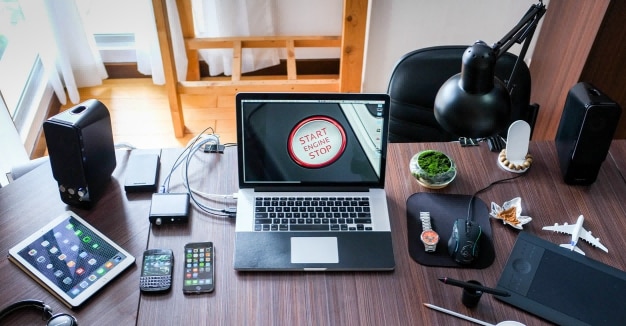Have you ever noticed that whenever you walk into a room, its atmosphere and ambiance have a significant impact on your mood? Even if you haven’t observed such changes, several studies suggest that the interior design, lighting, environment, and several other key elements of the room affect your mood. Such studies led us to the fact that this applies to your working spaces as well and helped in the development of the idea that your productivity and motivation towards work may be tied to the way your workspace is designed.
The idea discussed above suggests that you can achieve a more positive mindset towards your work just by redesigning the workplace. The Covid-19 Pandemic has caused a major spike in anxiety, stress, and depression. Under these circumstances, it has become even more important that employers and corporations focus on the mental health of their employees.
Lack of motivation, procrastination, and decline in productivity are some of the symptoms that stem from mental health disturbances. Lockdown has rendered most of us working from home, and a lot of us have noticed that we are not as productive as we used to be in our workplaces. Well, it may be because at home we have access to fewer resources as we do in our workplace including the advantage of not having to deal with the homely distractions. But, one important factor that you may have overlooked regarding your lack of motivation and productivity is your mental health.
If you feel like workspace is affecting your mental health, there’s always something you can do to make it better for yourself and others as well. Here are a few characteristics that every workspace should have:
1.Natural Light
Whether you work from a tiny home office or the 15th floor of an office building, your workspace should have tons of natural light. There are several health benefits of exposure to natural light which include reduction in eye strain, decreased chances of headaches, and most importantly, natural light triggers the production of serotonin, a hormone that lifts your mood.
In offices, employers should opt for open floor plans to allow the passage of natural light throughout the entire floor. And in the case of home offices, it is better to choose a room with the most access to natural light. It is also encouraged by interior designers that you choose a space with high ceilings which provides the illusion of openness even if the room is not that spacious.
2.Appropriate Ergonomic Furniture
What does office furniture have to do with mental health? One might ask. Ergonomic furniture helps not only helps improve productivity but also keeps your physical health in check, which means less stress and more productivity for you. This perspective of mental health wellbeing within a workplace is often ignored. That’s why it is urged that employers opt for ergonomic furniture that fits with the interior design of the office.
3.Incorporate Nature
Elements of nature in the interior design of a workplace generate a happier and calmer environment for the employees. The addition of plants, wooden material, and water, such as an aquarium, or a small fountain has been identified as ways to reduce stress and anxiety.
In addition to reducing stress, another benefit of green walls and plants is that they act as natural air filters and help provide cleaner air indoors. Better air filtration means reduced chances of infection by pathogens and improved air quality which is beneficial for employees with asthma and other lung diseases. And as we have mentioned above, good physical health means you have one less thing to worry about.

4.Separate Relaxing Space
When trying to incorporate mental health wellness into your workplace, you have to take into consideration exercises like meditation that help people cope with stress, anxiety, and panic. Such exercises require quiet and secluded spaces, free from all sorts of distractions. So, it will be wise to add such a space in your workplace.
Separate relaxing spaces have started to become a norm among many offices as it helps with corporate wellbeing. Quiet spaces also facilitate inclusiveness as religious people can use them to pray or perform other religious activities in peace.
5.Improve Communal Activity
Collaboration among employees regularly can help get rid of feelings of loneliness and isolation that may have risen while remote working due to the pandemic. So to improve the mental well-being of the employees it is ideal to have an office design that maximizes communal activity. As long as social distancing is maintained and SOPs are followed properly, small meetings and presentations can be held to increase the interaction of employees with each other.
Final word
We spend a significant amount of time in our workspace. And we often overlook the fact that uninviting or uncomfortable workspaces can lead to reduced productivity, procrastination, and lack of motivation, which can take a toll on our mental health. But this problem can be easily overcome by identifying the problems with the workspace and rectifying them with whatever resources we have available.